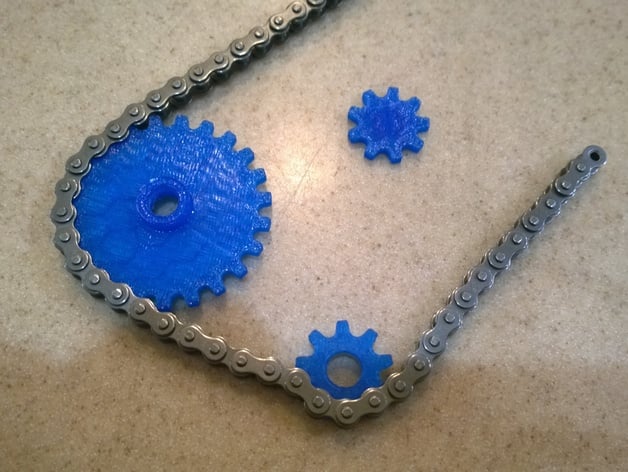
Roller Chain Sprockets OpenSCAD Module
thingiverse
I was playing with sprockets and chain for driving L3-G0's motors (http://L3-G0.blogspot.com - My full-size Lego R2D2, video on Youtube). I struggled to find a sprocket supplier, so decided to print my own using OpenSCAD. This software is designed for making custom sprockets with various chain sizes and allows easy modification. To use OpenSCAD, download the software from www.openscad.org and copy the 'sprockets.scad' file into a folder on your computer. In OpenSCAD, enter a command like "// #25 chain, 9 tooth, sprocket with 5/16" bore.sprocket(25, 9, 5/16);" to generate a sprocket for your specific needs. Press F5 (Design->Compile) and then F6 (Design->Compile and Render) to preview the sprocket. Finally, export it as an STL file. Sprockets.scad provides various parameters like chain size, number of teeth, and bore size that you can customize according to your requirements. Additionally, you can add a hub to the sprocket for extra functionality. The software also includes fudge factors for adjusting the bores, rollers, and teeth diameters based on your printer's capabilities. Remember to check out L3-G0's blog (http://L3-G0.blogspot.com) and share his video channel with friends!
With this file you will be able to print Roller Chain Sprockets OpenSCAD Module with your 3D printer. Click on the button and save the file on your computer to work, edit or customize your design. You can also find more 3D designs for printers on Roller Chain Sprockets OpenSCAD Module.
